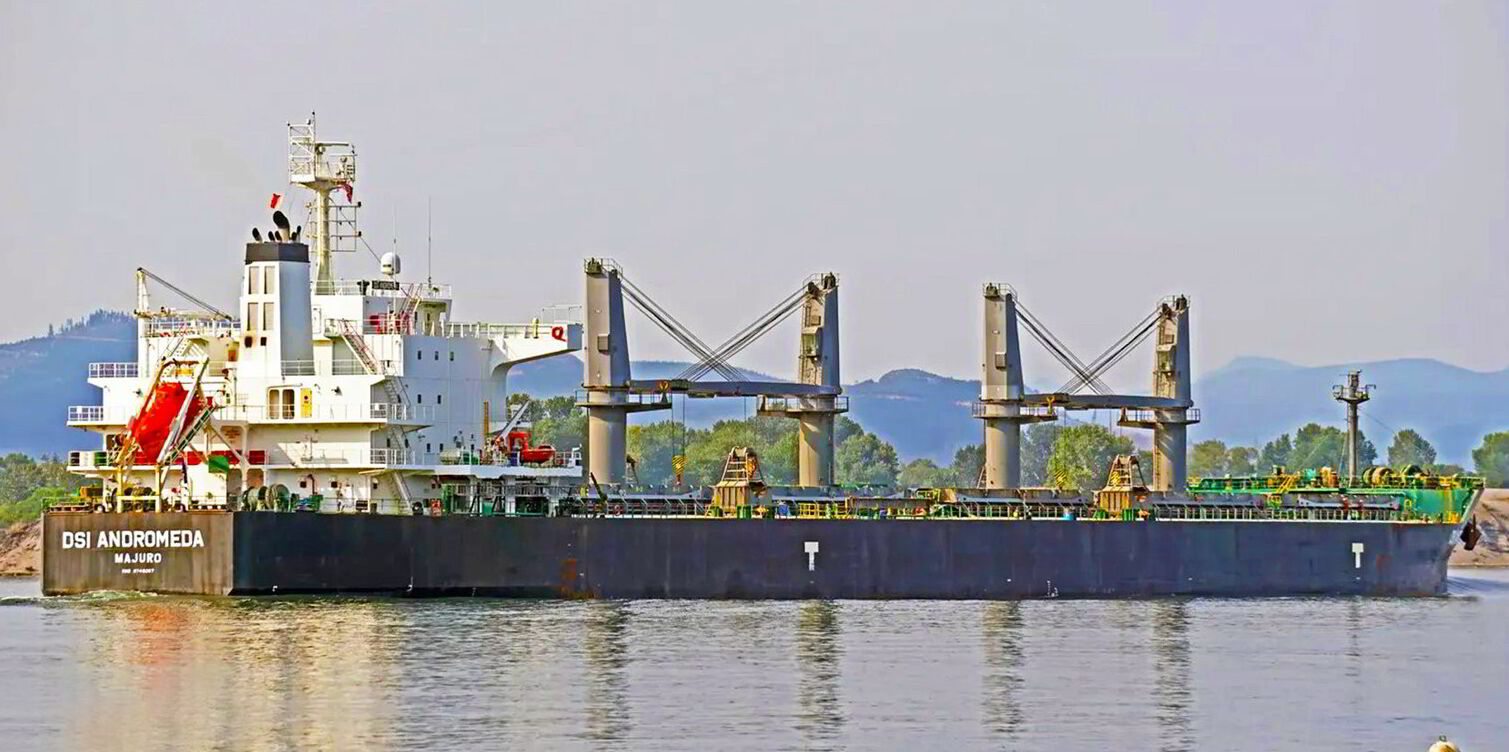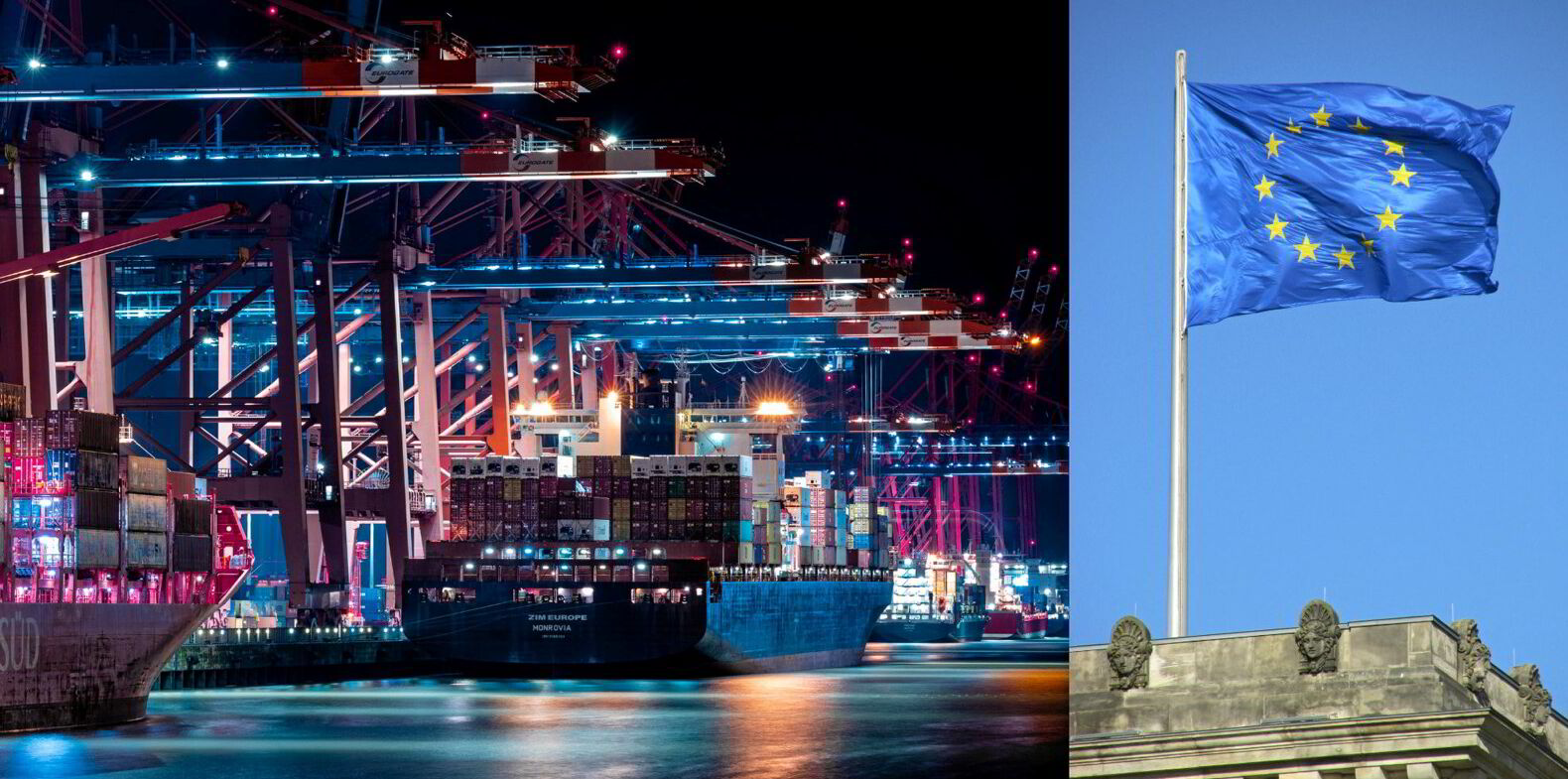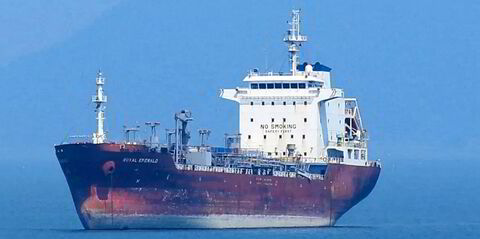“Strong. Steady. Solid.” Reading analysts’ notes about Belships quickly becomes repetitive, and so it proved again after the ultramax owner reported its third-quarter results on Thursday.
Perhaps analysts should also add “shrewd” to the list of S-words used to describe the Oslo-listed shipowner.
Freight earnings fell during the third quarter but the bottom line was lifted by gains from the sale of two older supramaxes earlier this year and the reorganisation of its operator business, Norwegian Bulk Carriers.
Belships also revealed a new deal to lease a 64,000-dwt ultramax newbuilding that will deliver in 2027.
“We added more newbuildings as a relatively early delivery became available through our relationships in Japan,” CEO Lars Christian Skarsgard told TradeWinds.
The new vessel will be leased from an unnamed Japanese shipowner with purchase options attached.
The ship is under construction at Nantong Cosco KHI Ship Engineering and will be built to the Nacks64 design, Skarsgard confirmed.
Its description matches that of an ultramax under construction for shipowner Hinode Kaiun of Japan.
As with similar leasing deals Belships has signed previously, it is not required to make any down payments and has purchase options for the vessel.
The global fleet of supramaxes is ageing and is slowly being superseded by newer, larger ultramax bulkers.
But the hangover of older vessels in the market will persist for some time yet, leaving a headache for some owners.
“I think reduced shipbuilding capacity, through closures, consolidation and berths taken up by other segments, [has] weighed in here,” Skarsgard said of the ageing global fleet.
“Also, the impasse that the green shift has created; many companies have been on the fence waiting for a new fuel, new design or technology.”
Belships decided to turn the indecision of the wider industry into an opportunity, he said.
It began acquiring new and modern ships with a particular emphasis on leases with no down payments required.
Then it sold off all its older vessels with inefficient designs.
“Since then, little new fuel has been adopted in dry bulk, and newbuilding prices have consistently edged up and are 35% up now since 2019 levels,” Skarsgard said.
“For Belships, we thereby managed to renew our fleet at a relatively low cost compared to if we were to start that exercise today.”
Belships’ net profit for the third quarter was $19.3m, up from $15.3m in the same period last year.
The quarterly result came in spite of a fall in net freight revenue, which totalled $67.3m, down from $114.6m a year earlier.
Profit was lifted by a $6.5m gain on two older supramaxes sold earlier this year, plus $10m from the reorganisation of its operating business, Norwegian Bulk Carriers.
Belships will distribute NOK 0.50 ($0.04) per share in dividends for the third quarter, which is NOK 0.05 less than for the previous three months.
This follows soon after an extraordinary dividend of NOK 1 per share paid in October.
The average build year of a Belships vessel is 2019 and this will reduce further as its 12 newbuildings are delivered.
The shipowner took delivery of its latest newbuilding — the 63,718-dwt Belgrace (built 2024) — from Shin Kasado Dockyard in Japan in September.
The ship has commenced an 18-month charter at a gross rate of $16,500 per day. Fearnleys Securities called the daily rate “strong”.
“The spot market for supramaxes has been weak lately. Interest rates significantly increased, so I think this affects sentiment,” Skarsgard said.
“Belships is anyhow sheltered with fixed interest rates on most of [our] financing and we have contract coverage for the short term.”
The focus on forward coverage has increased as spot rates have subsided, which has had a knock-on effect on Norwegian Bulk Carriers’ ability to capture money-spinning opportunities in the spot market.
The operator, previously known as Lighthouse Navigation, contributed $1.5m of Belships’ $27m Ebitda for the quarter. Its five-year rolling average is $2.5m per quarter.
When freight markets have been strong, Norwegian Bulk Carriers has proved a formidable cash generator.
In the final quarter of 2021, when super-strong supramax spot rates hit levels not seen in more than a decade, it contributed $22.9m to Belships’ $70.4m Ebitda.
Belships has fixed-rate contract coverage for 80% of ship days in the fourth quarter at about $16,200 per day.
As a point of reference, the relevant Baltic Exchange index for average ultramax spot rates was $12,882 per day on Friday.
About 37% of Belships’ vessel days in the next four quarters have been covered at around $16,200 per day.
Ten of its ultramaxes are chartered out on index-linked contracts at an average premium of 103% to the corresponding Baltic index for ultramax vessels.
Belships also paid off $8.3m of its bank debt in November, which has pushed out its next repayments to 2026 and reduced its outstanding bank debt to $81m.







